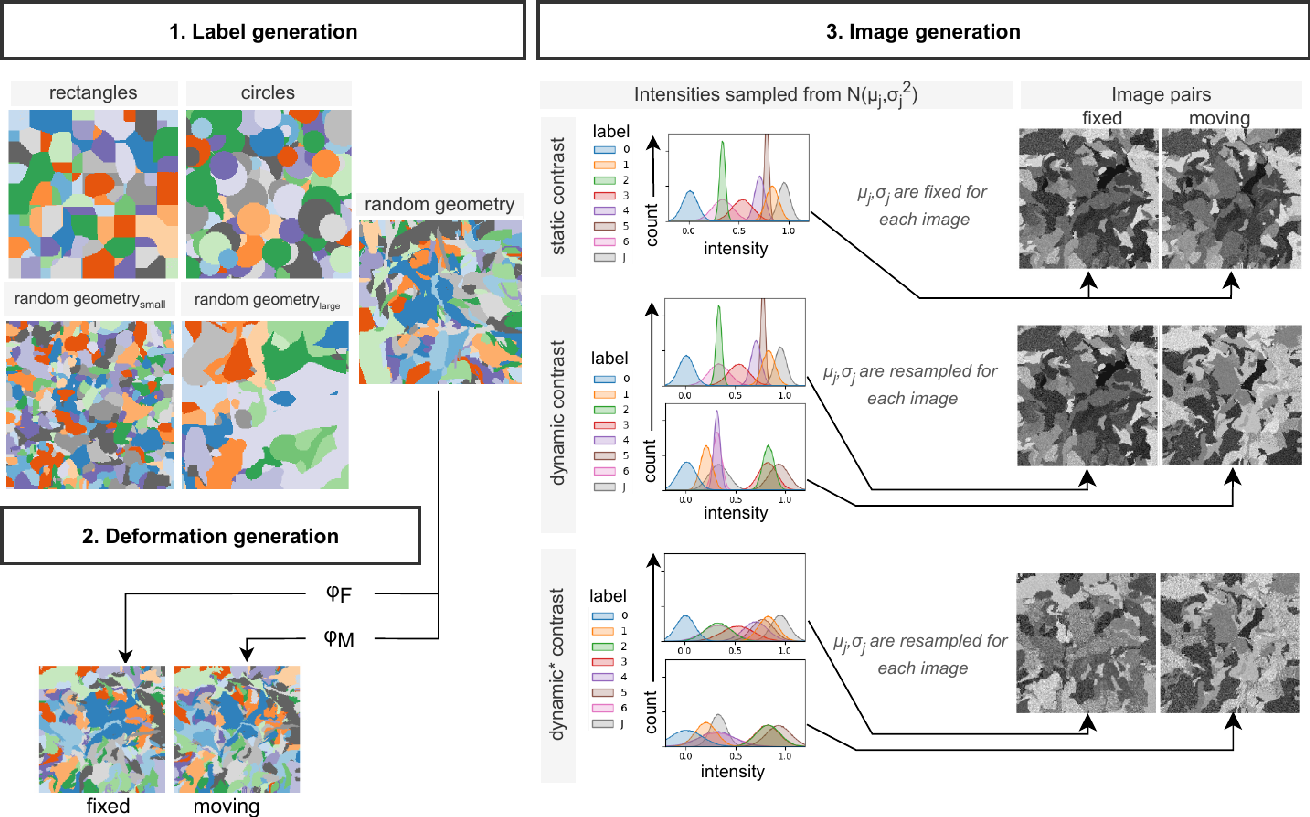Robust deformable image registration using synthetic data and transfer learning
Iris D. Kolenbrander1,2 , Matteo Maspero3,4
, Matteo Maspero3,4 , Josien P.W. Pluim1
, Josien P.W. Pluim1
1: IMAG/e Group, Department of Biomedical Engineering, Eindhoven University of Technology, The Netherlands, 2: Eindhoven Artificial Intelligence Systems Institute, Eindhoven University of Technology, The Netherlands, 3: Computational Imaging Group for MR Diagnostics & Therapy, University Medical Center Utrecht, The Netherlands, 4: Department of Radiotherapy,University Medical Center Utrecht, The Netherlands
Publication date: 2025/08/15
https://doi.org/10.59275/j.melba.2025-5dab
Abstract
Deep learning models have recently achieved accuracy comparable to traditional iterative methods for deformable image registration. However, their performance often degrades when test data deviate from the training distribution, for example due to changes in imaging protocols or subject demographics. While data augmentation can improve robustness, it may not account for all types of domain shifts, particularly those that are unpredictable. To address this limitation, recent approaches have explored training on synthetic images with diverse structures and intensities to promote generalization across modalities and anatomical regions. Nevertheless, the robustness of such models to other types of domain shifts, and their adaptability to specific registration tasks, remains unclear.
In this study, we investigate whether transfer learning can enhance registration model robustness under unforeseen domain shifts. We first train a generic, weakly supervised model on synthetic data, then fine-tune it on target domains. Specifically, we examine: (1) how design factors in synthetic data influence cross-domain performance (e.g., brain MRI vs. lung CT); (2) the efficiency of fine-tuning compared to training from scratch; and (3) the robustness of fine-tuned models on previously unseen datasets. Our results show that the fine-tuned model achieved the most consistent registration performance across datasets. It also required fewer training epochs and less target domain data than from-scratch training. Furthermore, while the use of random geometric shapes and dynamic contrast in the synthetic data was critical for cross-domain performance, we found that different target domains may benefit from different synthetic data. These findings support transfer learning as a promising strategy to improve robustness to diverse domain shifts in deformable image registration.
Keywords
Deep learning · deformable image registration · synthetic data · transfer learning · robustness · domain shifts
Bibtex
@article{melba:2025:013:kolenbrander,
title = "Robust deformable image registration using synthetic data and transfer learning",
author = "Kolenbrander, Iris D. and Maspero, Matteo and Pluim, Josien P.W.",
journal = "Machine Learning for Biomedical Imaging",
volume = "3",
issue = "August 2025 issue",
year = "2025",
pages = "287--310",
issn = "2766-905X",
doi = "https://doi.org/10.59275/j.melba.2025-5dab",
url = "https://melba-journal.org/2025:013"
}
RIS
TY - JOUR
AU - Kolenbrander, Iris D.
AU - Maspero, Matteo
AU - Pluim, Josien P.W.
PY - 2025
TI - Robust deformable image registration using synthetic data and transfer learning
T2 - Machine Learning for Biomedical Imaging
VL - 3
IS - August 2025 issue
SP - 287
EP - 310
SN - 2766-905X
DO - https://doi.org/10.59275/j.melba.2025-5dab
UR - https://melba-journal.org/2025:013
ER -